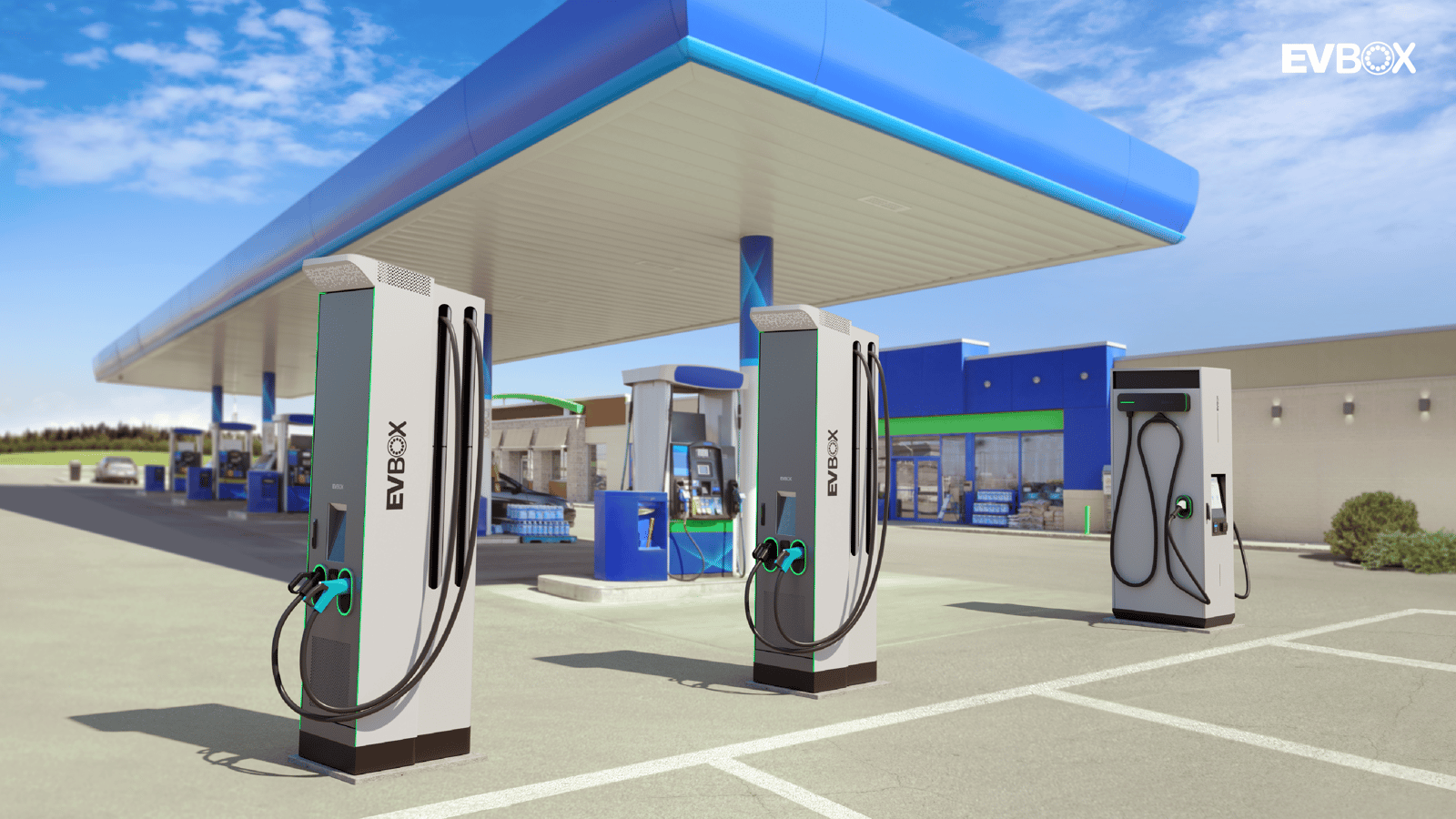
The need for fast and efficient EV charging solutions is increasing just as quickly as the global adoption of electric mobility itself. In turn, all kinds of businesses are looking for a fast, scalable, and efficient solution to offer EV charging at their location.
In this search, more and more businesses are beginning to discover that DC charging is their optimal solution. No surprise there, as these high-powered stations, also known as fast or ultra-fast charging, are capable of charging electric vehicles in mere minutes.
However, there are many possibilities out there, so it’s important to know exactly what your business is looking for.
Which businesses can benefit from DC charging?
Generally speaking, there are two main use cases for DC charging: commercial charging and fleet operations. That is, either you want to bring EV charging customers to your business’s location or you are a fleet operator and want to make sure that your fleet (i.e. buses, delivery vans, trucks) is charged and ready to go.
Commercial charging
When you want to offer fast charging stations to your EV driving customers, there are a number of questions that you should be asking yourself that can help you decide which type of DC charging is best for your business.
Question 1: How long do your customers stay at your location?
This might be the most important question to ask before embarking on your DC charging journey. It’s important to note that this question can be also rephrased as “how long do you want your customers to stay at your location?”
DC charging stations are attractive for EV drivers who need to charge in a short amount of time—and these drivers are willing to go out of their way for convenience.
In addition, it is important to understand where they are usually coming from and where they are heading. While this may be tricky to answer, it can help you to understand the desired power output you should provide to satisfy your customers' needs. It’s crucial to make sure that they have enough time to interact with your business as well as be certain that their vehicle will be charged sufficiently.
To illustrate, if you are an owner of a gas station on a highway, your customers most likely come with a low state of charge (SoC). Due to this, they’ll most likely want to recharge as fast as possible, get a small bite, and be on their way. In this scenario, your ideal DC charging station would have a higher charging output. For instance, one with 180 kW power output or higher.
If you’re the owner of a restaurant or retail store, on the other hand, where people tend to stick around for an hour or more, it may not be necessary to provide a DC charging station with such great power output. In this scenario, you’d be better off providing a small power output, such as 50 kW or 90 kW, but over a longer period and at less cost to your business.
Question 2: What type of EVs do your customers drive?
The kind of EVs your customer drive can be an important factor when it comes to choosing DC charging stations. Electric vehicles can differ in terms of battery sizes as well as in what type of connector they use (i.e. CCS2 vs CHAdeMO).
The size of a vehicle’s battery has an impact on the charging time. For example, if your customers are mostly electric bus drivers with large batteries, you need to consider that even though they stay for a shorter period of time, they'll still require a higher power output.
However, if your main customer segment is passenger vehicles—with smaller batteries— then these vehicles may not even benefit from ultra-fast DC charging stations. For instance, while the maximum power output for a fast charger is 350 kW, a 2021 Nissan Leaf’s maximum fast charging capability is 46 kW.
In addition, while most of the electric vehicles have CCS2 plugs, there are still a number of vehicles on the road with the Japanese standard (CHAdeMO). While this is changing after the adoption of CCS2 as the European standard, there are still over half a million vehicles with CHAdeMO plugs in Europe. Therefore, it’s important to keep in mind that to increase accessibility, you should offer a variety of charging ports.
Question 3: Where can I install the charging stations at my location?
Taking a deeper dive into different DC charging possibilities, there are two main architectures when it comes to fast and ultra-fast charging solutions: Standalone and split.
- Standalone solutions are all-in-one DC charging stations that often come in more bulky units, combining both the user interface and the power supply.
- Split solutions have two separate modules; a user unit that the driver interacts with and a power unit that provides energy to the user unit. Generally, split solutions can deliver more power than a standalone solution.
Based on the layout of your location and your business’s needs, either may be a sufficient option. Keep in mind however that in practice, the split solution provides a higher power output for faster charging.

Question 4: Which payment method do you prefer?
Since you are offering charging to the customers at your locations, you might want to make additional revenue out of it. Therefore, it is important to consider different payment methods available, such as RFID cards, key fobs, payment terminals, or an app. Ease of payment is one factor that will determine how your customers experience charging and whether they become repeat customers.
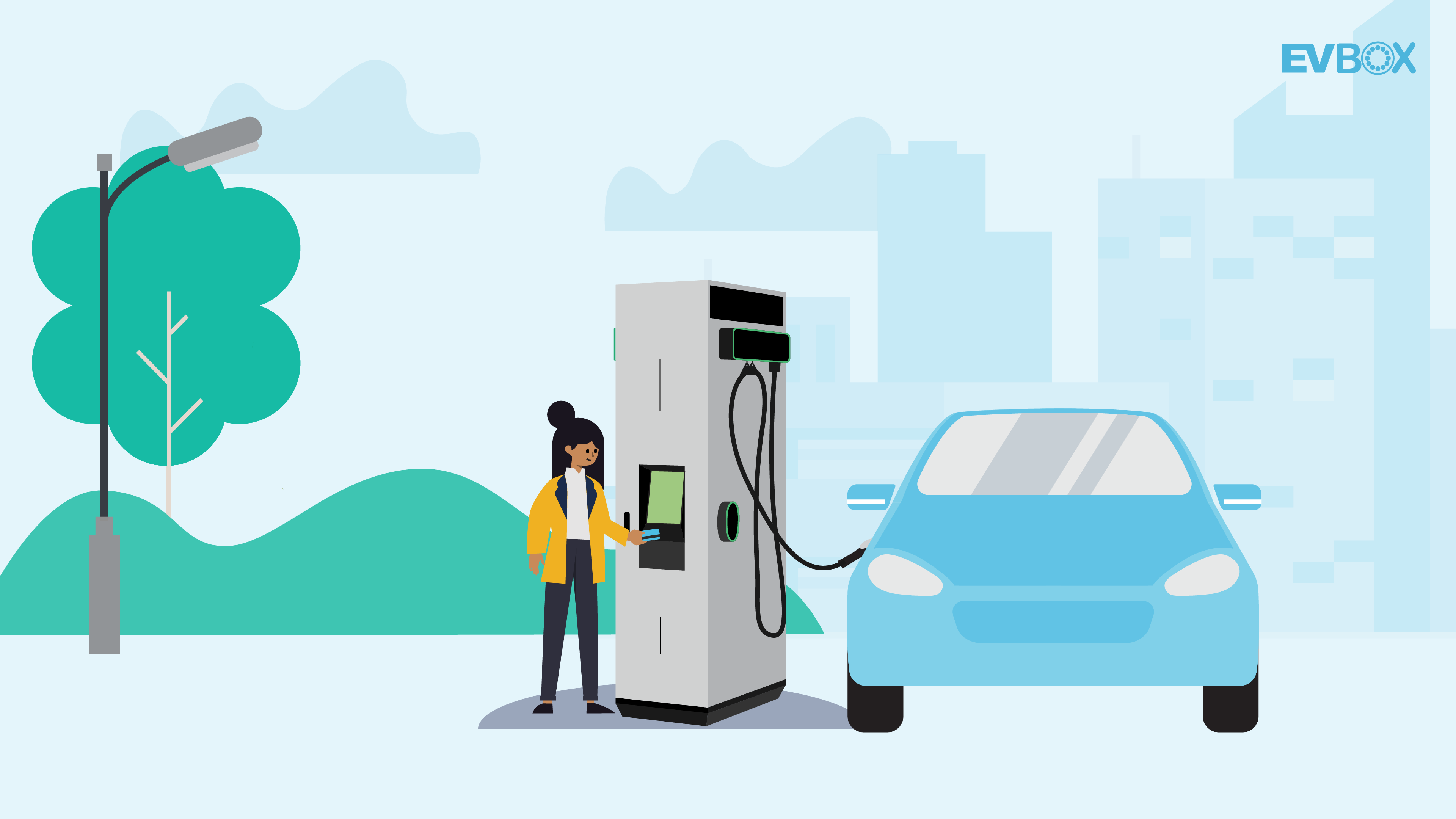
Question 5: What does the future hold?
Over the last few years, electric mobility has grown exponentially, and this surge is not expected to slow down any time soon. According to IEA’s Global EV Outlook 2021 report, electric car registrations increased by 41 percent in 2020 alone, despite the pandemic-related worldwide downturn in car sales. Over the next few years, the uptake of electric vehicles is predicted to continue to increase.
That means that today, the numbers of EV drivers utilizing the charging infrastructure you provide might be dramatically different from the number searching for charging stations tomorrow. To prepare for this expected fluctuation of EV drivers searching for a place to charge, it is important that your DC charging station can accommodate this future growth.
Modular units that offer a variety of power outputs, charging cables, and payment options can help your business prepare for the future whilst not overextending yourself today—you can choose a smaller power output today and add additional power modules as demand for DC charging grows.
Modular DC charging stations, such as EVBox Troniq Modular, give you the flexibility to enter the charging industry now and expand your offering as your needs evolve.
Fleet charging
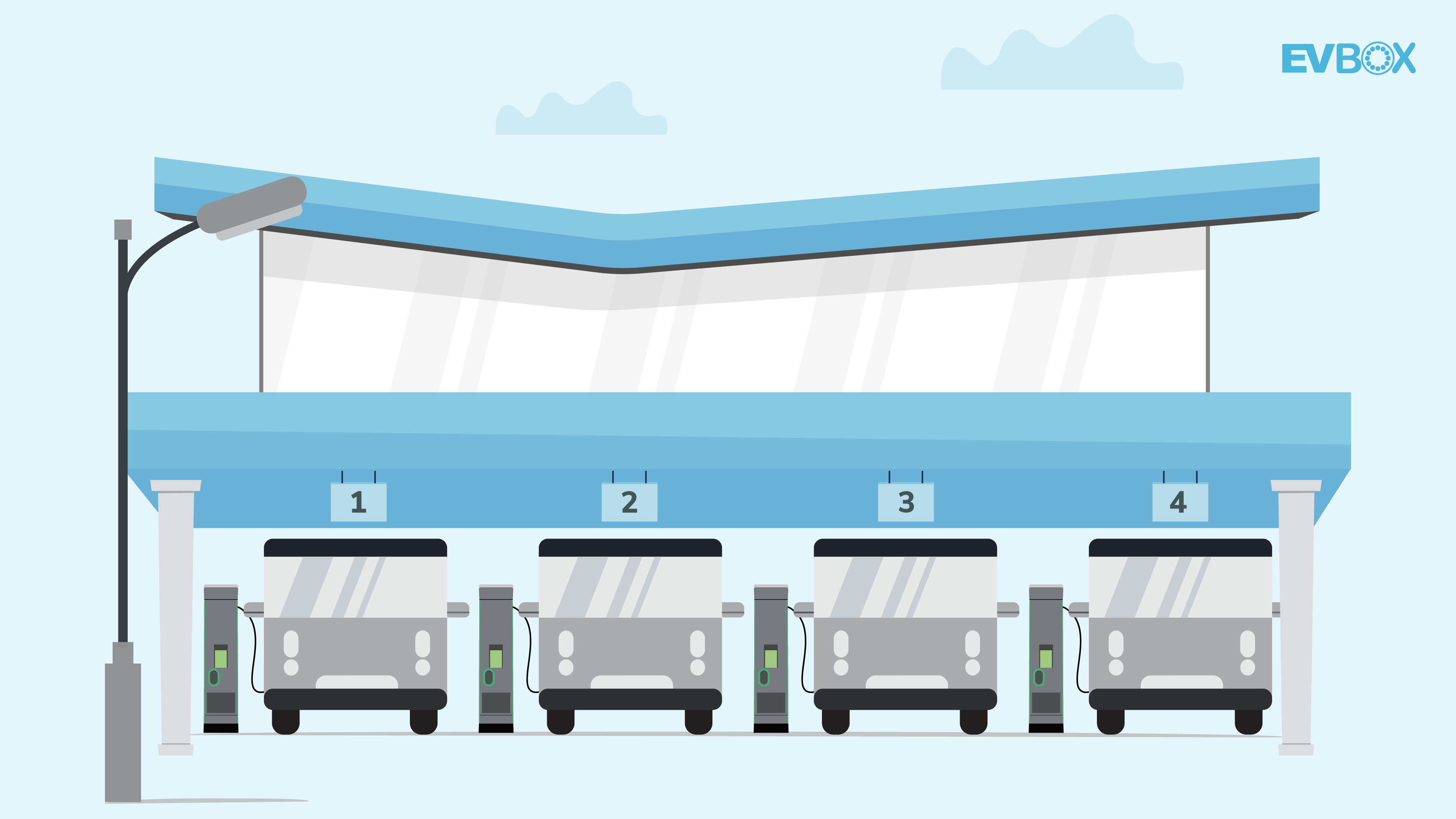
The majority of the questions above are also relevant to EV fleet operators, albeit the answers are, at times, more predictable.
Fleet charging provides more assurance in comparison to your commercial charging counterparts. Due to the fact that, as a fleet operator, you have a comprehensive understanding of the types of EVs at your location, the exact length of how long the EVs stay, as well as the length of their routes. This provides clarity and a unique opportunity to create a scalable charging strategy that precisely fits your current and future needs.
- Current needs. Dwell times, the routes the vehicles take, the battery size of the EVs as well as the power output a vehicle can accept are other important elements to factor into a charging strategy. Only once you’ve got a clear overview of these factors and the unique specifications of the charging location or depot should you move on to choosing the right hardware.
- Future needs. EV fleets are expanding rapidly in several of the world’s largest vehicle markets, according to IEA’s Global EV Outlook 2021 report. It’s therefore likely that the proportion of EVs that make up your total fleet will grow in the future. To meet this growth, it is important to include a scalable plan to accommodate your DC charging infrastructure today as well as prepare for growth tomorrow.
Essentially, as your EV fleet grows, it all comes down to your charging strategy and whether the choices you make today are both scalable and robust.
Scalability is key
Because of the increasing share of the EVs in your fleet—as well as the different types of EVs and their batteries—the best-suited products are modular charging stations, such as EVBox Troniq Modular. Modular charging stations allow you to prepare for the future growth ahead and grow with your charging needs as you electrify your fleet. By investing in modular hardware now, you’re setting yourself up for long-term success.
Conclusion
In conclusion, while the right DC charging station for you may depend on multiple factors, investing in modular hardware is by far the smartest choice to set yourself up for success. Having the ability to increase your offering as EV charging customers grow and electric vehicles evolve, you will be setting yourself up for long-term success.
What’s more, by providing DC charging to EV drivers, your business can position itself as a leader in the electric mobility revolution—DC charging solves the number one barrier to EV adoption: range anxiety—as well as attract valuable new customers who spend more and stay for longer.
Of course, it’s crucial that you find a reliable partner to help you ensure the safe installation and maintenance of your EV charging stations, and to keep your network up and running.
EVBox provides a range of DC charging stations as part of our end-to-end electric vehicle charging solutions for businesses around the world. For a complete list of tech specs and use cases, as well as more information, take a look at our portfolio of DC charging stations designed for every business looking to electrify its operation.
|
Discover how to best invest in fast EV charging All kinds of businesses are looking for a scalable and efficient way to offer fast EV charging. Here's everything they should be asking themselves. |
Related articles

EV charging load management and the importance of cluster load balancing
Electric vehicle (EV) charging stations can add a substantial load onto your building’s power supply, often requiring...
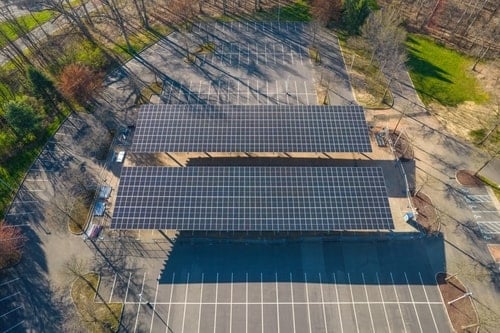
How to design a DC fast charging site
When thinking about installing DC fast charging stations on your site, careful consideration must be given to designing...
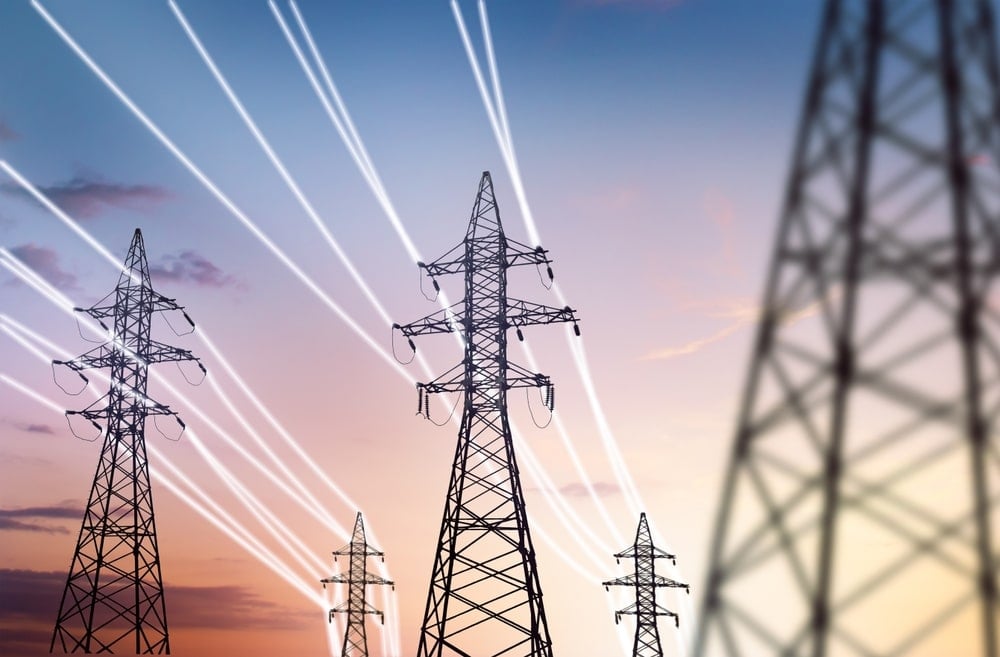
Grid connections for DC fast charging stations explained
The electrical grid is a large and established network delivering electricity from producers to consumers, and...

